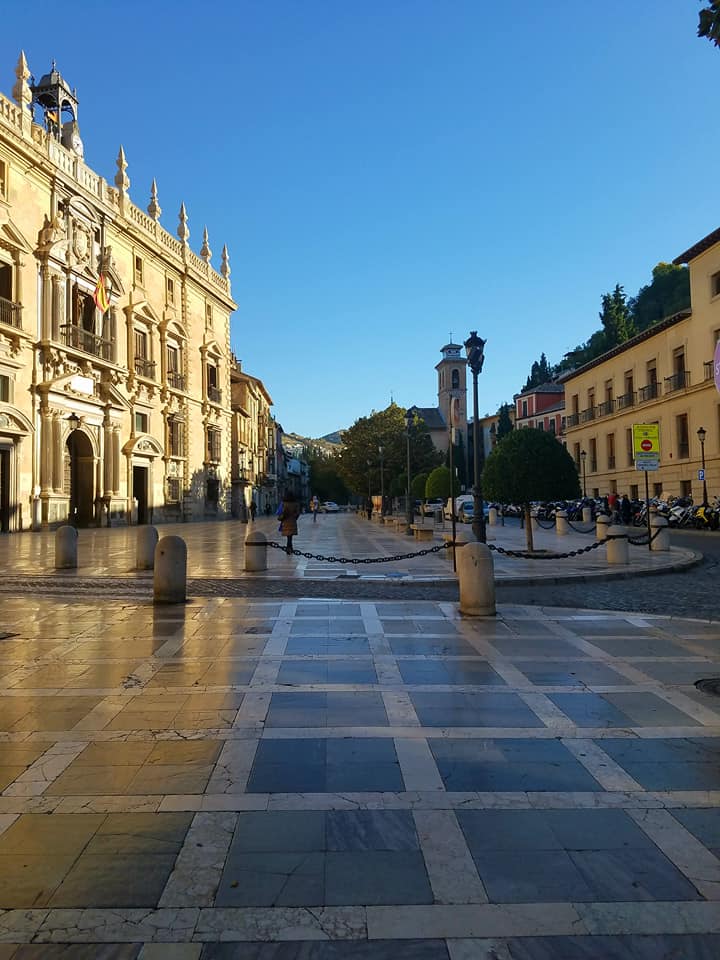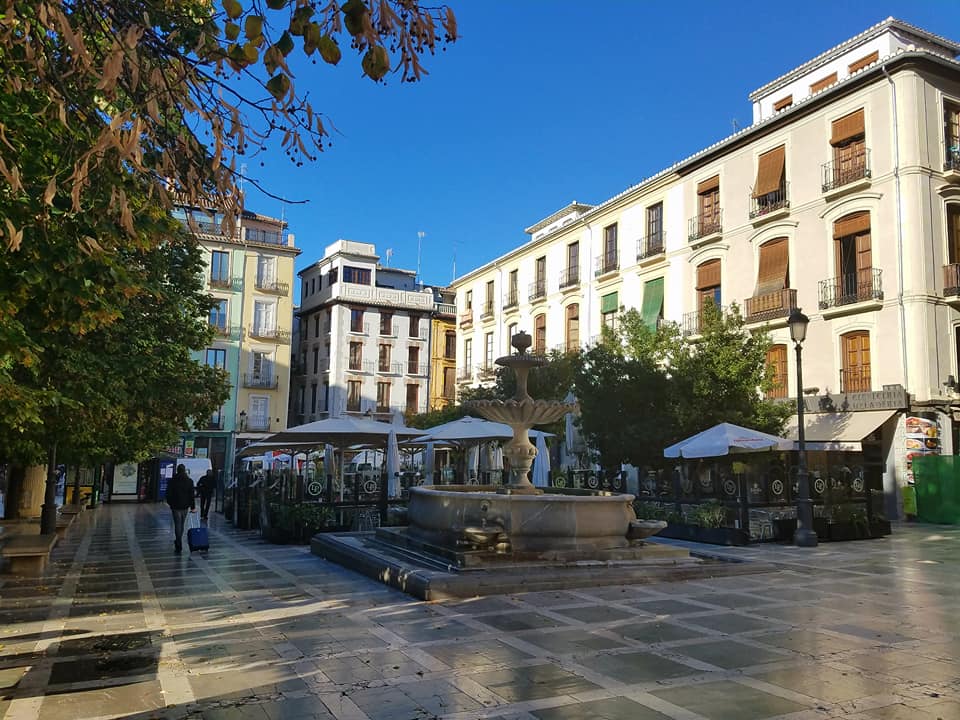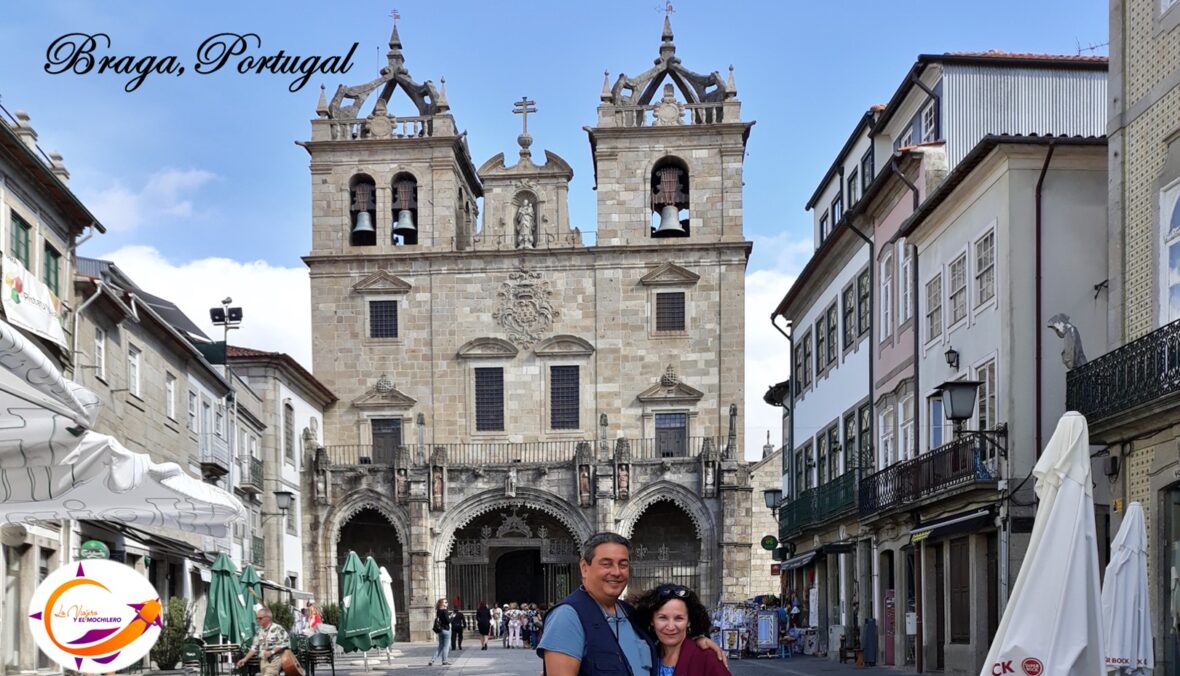 The New Plaza in Granada, Spain, is an urban space of an approximately rectangular shape. Much of its plant sits on the vault of the channeled Darro river that crosses longitudinally, from north to south, and on which has been built.
The New Plaza in Granada, Spain, is an urban space of an approximately rectangular shape. Much of its plant sits on the vault of the channeled Darro river that crosses longitudinally, from north to south, and on which has been built.  Its current configuration is the result of continuous transformations that began with the widening of the Alhachimín bridge or bath of the Crown, also known as of barbers and loggers, built during the zirí reign in the eleventh century. The Square of Hatabin or San Gil, connects at the end of Elvira Street, with the districts on the left bank of the Darro, granting access to the Alhambra via the slope of Cutlers. Later, the council asked the Crown permission and funds to urbanize this area into a place that ennobled the city. Work began in 1506 and concluded in 1515 by the mason Miguel Sanchez de Toledo, consisted of channeling seventy-two meters of the Darro river under a vault or dome. Over the years, it underwent further extensions reaching the “Plaza Nueva” we know today. A meeting place for fine dining and very welcoming hotels.
Its current configuration is the result of continuous transformations that began with the widening of the Alhachimín bridge or bath of the Crown, also known as of barbers and loggers, built during the zirí reign in the eleventh century. The Square of Hatabin or San Gil, connects at the end of Elvira Street, with the districts on the left bank of the Darro, granting access to the Alhambra via the slope of Cutlers. Later, the council asked the Crown permission and funds to urbanize this area into a place that ennobled the city. Work began in 1506 and concluded in 1515 by the mason Miguel Sanchez de Toledo, consisted of channeling seventy-two meters of the Darro river under a vault or dome. Over the years, it underwent further extensions reaching the “Plaza Nueva” we know today. A meeting place for fine dining and very welcoming hotels.
 One of the buildings that we can distinguish in the “Plaza Nueva” is the palace of the Royal Chancellery. It is a mannerist style building built in 1531 and completed in 1587. It is the only building that has survived to this day without major changes and giving the square a great character.
One of the buildings that we can distinguish in the “Plaza Nueva” is the palace of the Royal Chancellery. It is a mannerist style building built in 1531 and completed in 1587. It is the only building that has survived to this day without major changes and giving the square a great character.
